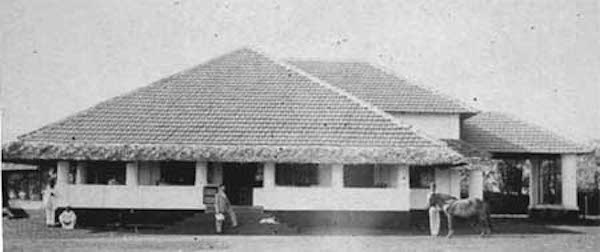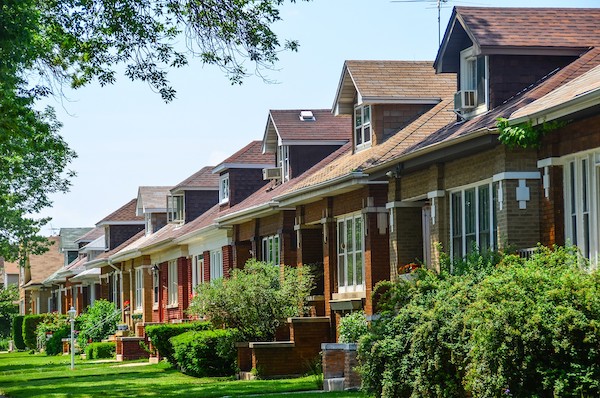Style Spotting on Main Street, Part 3: A Couple of Bungalows (or, er Craftsmen)?
Like many other commonly used terms applied to domestic architecture, there is no neat definition of what exactly makes a house a bungalow. Some people consider bungalows a one-story iteration of a Craftsman-style house, while others have more strict interpretations.
What can be agreed on is that the word originated in India, where small freestanding structures with shallow-pitched thatched roofs and deep eaves, often used as travel shelters for wayfarers, were described as being built in the “Bengali” style.
Referred to at various times as Bangla, “bungales,” and “banggolos”, the Colonial British found the style ideally suited to the extremes of the subcontinent’s climate, and adopted the elements into their own buildings, eventually calling them “Bungalows” sometime around the 1820s. While those built by the British were generally larger than their native counterparts, featuring tiles roofs and deep verandas, they retained the open floor plans and one story height of the original structures.
Above, two examples of bungalows built for the British in INdia
By the 1870s, “bungalow” style cottages were being built in England, primarily as vacation houses on the seacoast, making their appearance in the States roughly a decade later, which coincided with the rise of the Arts and Crafts movement. A reaction against the industrialization of society and the formality and fussiness of the Victorian era, the movement looked toward simplicity, natural elements and craftsmanship into their designs.
A high style Victorian Queen Anne home (top) versus and Arts and Crafts home (bottom)
The bungalow, with its open floor plan, deep porch providing outdoor living space and a low silhouette that could blend with the landscape, was perfectly suited to those principles. Arts and Crafts builders and architects took the style and incorporated elements such as natural materials, built-in cabinetry, large paned windows and rustic exterior finishes into them.
A 1915 Craftsman Bungalow interior
So complete was the merger that that Bungalows are often considered a one-story subset of American Craftsman style houses. While originally taking root on the east coast, it was in California where the bungalow took off in a big way, where it was well-suited to the climate and popularized by architects such as Greene and Greene, who incorporated its elements into grander homes.
A Greene and Greene home in Pasadena
When companies such as Sears and Roebuck or Aladdin began offering bungalows as kits homes, they became immensely popular as an affordable choice for new construction in burgeoning middle and working class suburban neighborhoods all over the country, reaching its peak between the two world wars.
Many variations of the bungalow style exist, from the brick “Chicago style”
to Spanish Style
even Asian-influenced.
By far the most popular style however is the Craftsman style, and Germantown’s Main Street happens to have two of them.
This first example, a little west of the School, exhibits several trademark bungalow characteristics, including deep eaves, shingled siding, and tapered columns supporting the porch.
Farther west, closer to Hover Avenue, is a house with a steeper pitch to its roof that leans more craftsman than bungalow. Still, shows how the elements of the bungalow were adapted to the style, including its deep front porch, shed dormer and deep eaves.
This is the third in my series of posts on the architectural styles found on Germantown’s Main Street, the first being Gothic Revival and the second looking at Dutch Colonial homes.

















